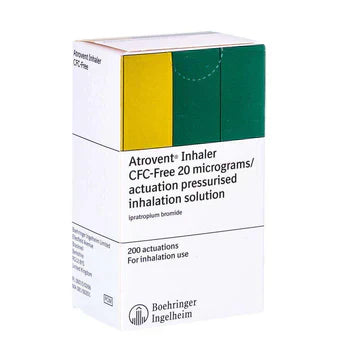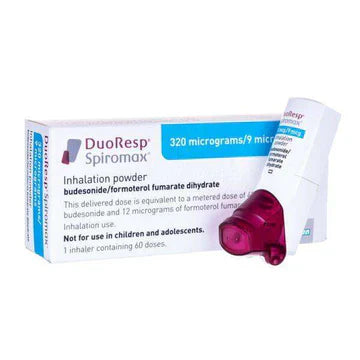Allergies and asthma: A Comprehensive Guide

Related products
Allergies and Asthma: A Comprehensive Guide
Introduction
Asthma and allergies are common conditions that affect millions of people worldwide. Often, these two conditions coexist, with allergies being one of the most prevalent triggers for asthma symptoms. Both conditions are characterized by an overreaction of the immune system to harmless substances, leading to inflammation and irritation in the body. This comprehensive guide will delve into the relationship between allergies and asthma, explaining how to identify triggers and manage these conditions effectively. Throughout the article, expert opinions and advice from doctors will be included to provide valuable insights. While this article is specific to the topic of allergies and asthma, you can find our definitive guide on: Asthma: Definition, Causes, Signs and Symptoms, Diagnosis, and Treatments.
Understanding Asthma and Allergies
Asthma is a chronic lung condition characterized by inflammation and narrowing of the airways, which can cause symptoms such as wheezing, shortness of breath, chest tightness, and coughing. These symptoms can range from mild to severe, and in some cases, even life-threatening. Allergies, on the other hand, occur when the immune system overreacts to a harmless substance, known as an allergen, and releases chemicals that cause various allergy symptoms. Allergic reactions can affect numerous parts of the body, including the skin, digestive system, and respiratory system. Dr. Samantha Smith, an allergist-immunologist, explains that "the connection between allergies and asthma is quite strong, with nearly 60% of people with asthma having allergic triggers." This connection is especially important because it means that allergens can provoke asthma symptoms in people who are susceptible to both conditions. This subtype of asthma is known as allergic asthma.Identifying Allergic Asthma Triggers
To manage allergic asthma effectively, it is essential to identify the specific allergens that trigger symptoms. Identifying these triggers can help individuals develop strategies to avoid them and minimize their impact on asthma symptoms. Common allergens that can trigger allergic asthma include: Pollen: Seasonal allergies from trees, grasses, and weeds can trigger asthma symptoms in sensitive individuals. Pollen is released into the air during specific times of the year, depending on the plant species, and can travel long distances, making it difficult to avoid exposure. Dust mites: These microscopic creatures live in household dust and can cause allergic reactions and asthma symptoms. Dust mites are commonly found in bedding, carpets, and upholstered furniture, making them a widespread allergen in indoor environments. Pet dander: Animal proteins found in pet skin cells, saliva, and urine can trigger allergies and asthma. Pet dander can be particularly challenging to manage, as it can remain airborne for extended periods and is often found on clothing and other surfaces. Mold: Mold spores thrive in damp or humid environments and can provoke asthma symptoms when inhaled. Mold can grow on various surfaces, including walls, ceilings, and fabrics, making it a challenging allergen to control. Cockroaches: Allergens from cockroach droppings, saliva, and body parts can cause allergic asthma. Cockroach allergens are particularly problematic in urban environments and can be found in various indoor settings, including homes, schools, and workplaces. Dr. John Stevens, a pulmonologist, recommends that "patients with asthma undergo allergy testing to determine their specific triggers, which can help guide treatment and avoidance strategies."Managing Allergies and Asthma
Once you've identified your triggers, the next step is to implement strategies to manage your allergies and asthma effectively. These strategies may include: Allergen avoidance: Minimizing exposure to allergens is a crucial component of allergy and asthma management. This can involve using allergen-proof mattress and pillow covers, regularly vacuuming and dust ing, using a dehumidifier to reduce humidity, and keeping pets out of the bedroom. Additionally, monitoring pollen counts and minimizing outdoor activities during peak pollen seasons can help reduce exposure to pollen allergens. Medications: Collaborate with your healthcare provider to develop a personalized medication plan to control allergies and asthma. This plan may include antihistamines, which help reduce allergy symptoms, nasal corticosteroids to reduce nasal inflammation, inhaled corticosteroids to control airway inflammation, and bronchodilators to relax the muscles around the airways and improve breathing. Allergy shots (immunotherapy): Allergy shots can help reduce sensitivity to allergens over time and decrease the severity of allergic reactions and asthma symptoms. Immunotherapy involves gradually increasing the doses of allergen extracts, which allows the immune system to build tolerance to allergens and reduce the inflammatory response. Asthma action plan: Creating a comprehensive asthma action plan with your healthcare provider is essential in managing your condition effectively. This plan should outline how to monitor symptoms, avoid triggers, and adjust medications as needed. It should also include information on when to seek emergency care if asthma symptoms worsen suddenly. Regular check-ups: Maintaining regular appointments with your healthcare provider can help you stay on top of your asthma and allergy management. During these visits, your healthcare provider can assess your symptoms, evaluate the effectiveness of your treatment plan, and make any necessary adjustments. Dr. Jane Adams, an allergist-immunologist, emphasizes the importance of a collaborative approach to managing allergies and asthma: "Working closely with your healthcare provider is essential in developing an effective treatment plan tailored to your specific needs and triggers."Diet and Lifestyle Factors
In addition to allergen avoidance and medication management, certain diet and lifestyle factors can help improve asthma and allergy control. Some recommendations include: Maintaining a healthy weight: Obesity has been linked to increased asthma severity and poor asthma control. Losing weight, if necessary, can help improve lung function and reduce asthma symptoms. Eating a balanced diet: Consuming a diet rich in fruits, vegetables, whole grains, lean proteins, and healthy fats can help support immune function and overall health, which may contribute to better asthma and allergy control. Regular exercise: Engaging in regular physical activity can help improve lung function, strengthen respiratory muscles, and reduce asthma symptoms. However, it is essential to consult your healthcare provider before starting a new exercise program, as exercise can also trigger asthma symptoms in some individuals. Stress management: High levels of stress can worsen asthma symptoms and make it more challenging to manage both allergies and asthma. Implementing stress management techniques such as deep breathing exercises, meditation, yoga, and mindfulness can help reduce stress and improve overall well-being. Smoking cessation: Smoking is a significant risk factor for asthma and can exacerbate allergy symptoms. Quitting smoking is crucial for better asthma and allergy control.
Conclusion
Understanding the connection between allergies and asthma is crucial in effectively managing both conditions. By identifying triggers, working with your healthcare provider to develop a personalized treatment plan, implementing allergen avoidance strategies, and making lifestyle adjustments, you can control your allergies and asthma symptoms and lead a healthy, active life. Remember, collaboration with your healthcare provider and regular check-ups are essential components of successful allergy and asthma management.
Related Asthma Treatments
- Buy Asthma Inhalers & Treatment Online
- Buy Ventolin Accuhaler
- Buy Ventolin Evohaler
- Buy Salbutamol Inhaler
- Buy Clenil Modulite
- Buy Qvar Aerosol Inhaler
- Buy Salamol Inhaler
- Buy Able Spacer
- Buy Symbicort Turbohaler
- Buy Salamol Easi Breathe Inhaler
- Buy Sereflo
- Buy Child Aerochamber
- Buy Spiriva Respimat
- Buy Sirdupla
- Buy Duoresp
- Buy Qvar Inhaler
- Buy Pulmicort Turbohaler
- Buy Seretide Accuhaler
- Buy Montelukast
- Buy Serevent Evohaler
- Buy Kelhale Inhaler
- Buy Fostair Inhaler
- Buy Flutiform Inhaler
- Buy Flixotide Accuhaler
- Buy Bricanyl Inhaler
- Buy Atrovent Inhaler
- Buy Alvesco Inhaler
- Buy Airomir Inhaler
Related Asthma Articles and Information
- Asthma: Definition, Causes, Signs and Symptoms, Diagnosis, and Treatments
- Living with Asthma
- Allergic Asthma
- Brittle Asthma
- Asthma Diagnosis and Testing
- Eosinophilic Asthma Guide
- BTS Asthma Guidelines
- Allergies & Asthma
- Reactive Airway Disease
- Do I have Asthma? (Quiz)
- Is Asthma a disability?
- NICE Guidelines on Asthma
- Asthma Control
- Difference Between Asthma and COPD
- Vocal Cord Dysfunction
- Asthma Attacks
- Exercise-Induced Asthma
- What does an Inhaler do to someone without an Inhaler?
- Can I claim PIP for Asthma?
- How to use an asthma inhaler
- How to use a peak flow meter
- Is Salbutamol a Steroid?
- Montelukast, Side Effects and Uses
- AERD












 Rated Excellent by 26,523+ Reviews
Rated Excellent by 26,523+ Reviews